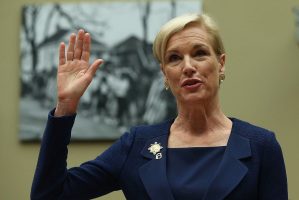Billion Dollar Weather Disasters Make 2011 Most Costly Yet for US
Weather-related disasters hit a record high in 2011 costing the United States at least $1 billion, according to the National Oceanic and Atmospheric Administration.
The National Oceanic and Atmospheric Administration (NOAA) is a scientific agency within the United States Department of Commerce focused on the conditions of the oceans and the atmosphere.
NOAA warns of dangerous weather, charts seas and skies, guides the use and protection of ocean and coastal resources, and conducts research to improve understanding and stewardship of the environment.
The NOAA reports the weather-related damage cost the U.S. at least $1 billion this year.
Extreme weather in America this year killed more than 1,000 people, National Weather Service Director Jack Hayes said in a statement. The billion-dollar disasters alone add up to $52 billion.
The old record for $1 billion disasters was nine, in 2008.
“We know the frequency of billion-dollar weather disasters is increasing since 1980,” Tom Karl, director of the National Climatic Data Center, told Bloomberg News. “Cleary a big factor this year was tornado outbreaks and severe local weather.”
Karl explained to Bloomberg that social and climate factors account for part of the increase.
He said the population has grown since 1980, people have a greater awareness about insuring their property and have more expensive possessions, which has increased the monetary damage figures. And on the climate side, warmer global temperatures mean there is more water vapor in the air, which leads to higher rainfalls that cause more flooding, he said.
Hurricane Irene, tornadoes as well as flooding on the Missouri and Mississippi rivers contributed to a record of U.S. weather-related disasters.
There are fears that this year's total billion disasters may not stop at 12 incidents. Officials are still adding up the damage from the Tropical Storm Lee and the pre-Halloween Northeast snowstorm, and so far each is at $750 million.





























